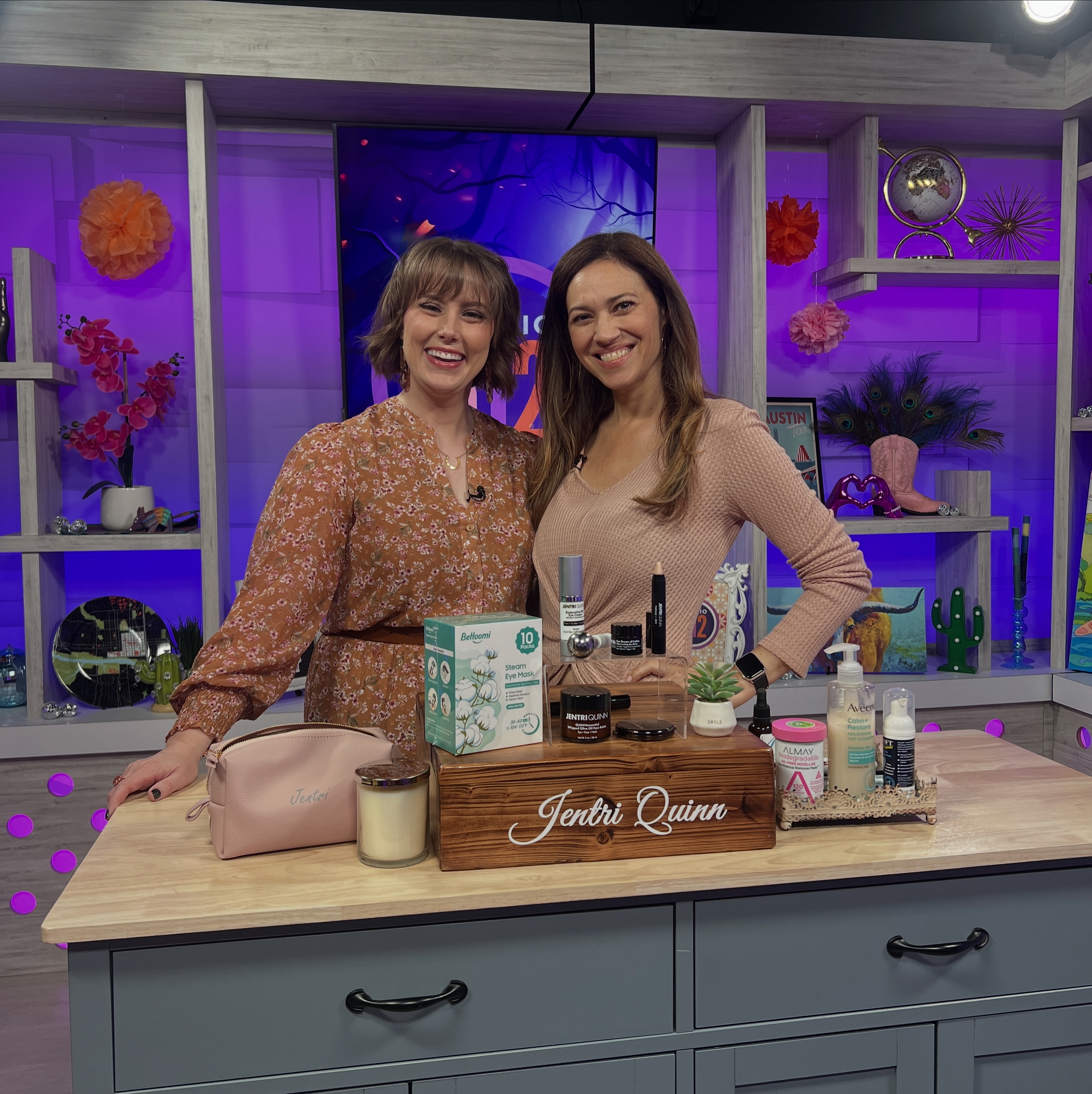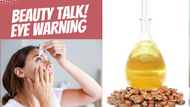Sensitive-Safe Skincare Swaps This Fall + Brighter Eyes, Zero Sting (As Seen on TV!)
Posted by Jentri Quinn on Oct 7th 2025
Ciao, Beautiful!
Or perhaps I should say HAPPY FALL, Y'ALL (we're in Austin, TX, after all, even if it still feels a little like summer)! In Texas, it takes us a bit longer to arrive to our cooler weather days where it feels like fall - and by that I mean reaching the 80's. I digress.
This post pairs with my Studio 512 TV segment—watch it live on KXAN on October 13, 2025 and then keep this cheat sheet handy for your vanity. (see the live replay below!)
If your eyes have felt a little more sensitive lately, you’re not imagining it. As we move through our 40s and beyond, our tear film changes, lids can get drier, and the little habits that never used to bother us suddenly… do.
As a licensed esthetician (and certified in oncology esthetics), I want to share a gentle PSA about what not to do around your eyes—and what to try instead—so you can keep that bright, comfortable, wide-awake look without the irritation.
Let’s talk about “DIY oils in the eye”
I love a multi-use oil as much as anyone, but there’s a big difference between sterile, ophthalmic formulas and the bottle sitting on your bathroom shelf. You may have seen videos recommending castor oil in the eye for dryness or even vision changes. That’s a hard no from me.
Why? Anything that touches the ocular surface needs to be sterile and properly formulated for the eye. Your favorite skincare oil—even if it’s cold-pressed and beautiful—wasn’t made for that job.
Safer swap: If your eyes feel dry or gritty, choose sterile artificial tears or a doctor-recommended lipid-emulsion drop designed for the eye. Pair that with warm compresses and gentle lid hygiene to support your tear film.
The “miracle drop” myth
Another claim that floats around: oils, such as Castor Oil, or “natural” drops that reverse cataracts or fix floaters. Cataracts are a structural change in the lens—there’s no topical potion that dissolves them. If you’re noticing cloudy vision, halos, or trouble with night driving, it’s time to schedule a proper eye exam, not a DIY experiment.
Safer move: Keep your eyes comfortable with approved, sterile products and partner with an ophthalmologist for anything affecting your vision.
Waterline tightlining every day
I get it—the instant definition is addictive. But lining the inner rim (the waterline) can push pigments and waxes straight into the tear film, especially if you wear contacts or tend to be dry.
Safer swap: Place your liner just above the lash line and smudge for softness. Brighten the eyes with strategic highlighting instead of the waterline—my go-to is a matte beige brow highlight under the arch and a tiny pop at the inner corner to lift without irritation.
Sleeping in eye makeup (or keeping mascara forever)
Mascara and creamy liners love to hang onto bacteria. Sleeping in them—or stretching that tube past its prime—can lead to styes, redness, and flaky lids that won’t quit.
Safer swap: Remove eye makeup every night with a gentle, oil-based remover followed by a soft cleanse. Replace mascara every 3 months. Your lids will thank you.
Lash extensions and adhesives
Lashes are fun until the glue isn’t. Extensions can trigger sensitivities, allergic blepharitis, or just chronic lid irritation.
Safer swap: If you’re reactive, try a conditioning lash routine on the hairs only (never in the eye) and focus on the illusion of lift: curl gently, use a flexible, tubing mascara, and add brightness with undereye concealer that respects mature skin.
What to do when eyes are fussy
If any of this sounds like you, here’s a simple, calming routine you can try for two weeks:
-
Wear disposable heated eye mask in the evening to help the oil glands in your lids do their job.
-
Gentle eyelid cleanse (think baby-soft, fragrance-free)
-
Sterile artificial tears as needed.
-
Makeup placed outside the waterline, plus soft highlighting to open the eye.
-
Nighttime moisture underneath your eye area: a thin veil of a tolerated occlusive on skin only to support the barrier.
If redness, pain, light sensitivity, thick discharge, or sudden vision changes show up, please see an eye doctor promptly. Nothing on the internet (not even from me!) replaces medical care.
I built my Glow Back™ philosophy around restorative, sensible care—especially for sensitive or compromised skin. We can be curious, we can try new things, and we can still keep our eyes safe and happy. That’s the sweet spot.
If you’d like a personalized, eye-safe routine that fits your lifestyle and sensitivity level, I offer a $39 1:1 skincare consult—and you can apply that fee toward product within 30 days. Book here: Schedule your Skincare Consult.
And if you’re navigating dryness, irritation, or recovery skin, grab my free Glow Back™ Skin Recovery Guide for step-by-step support: Download the free guide.
Remember, the more you know, the more you glow.
xoxo
Jentri
ps. catch the live replay!

#WomenOver40 #OncologyEsthetics #CastorOilMyths #WaterlineMakeup #BarrierSupport #BrightEyes #GentleSkincare #CleanBeautyOver40 #BrowCare #AgingGracefully #SkincareConsult #GlowBack #JentriQuinn #CastorOil #studio512

